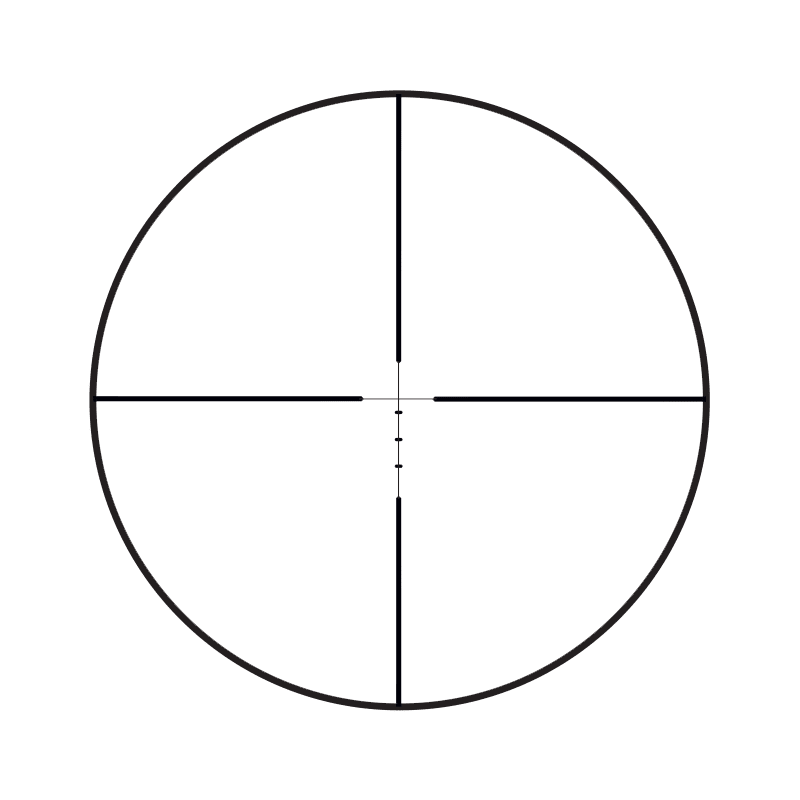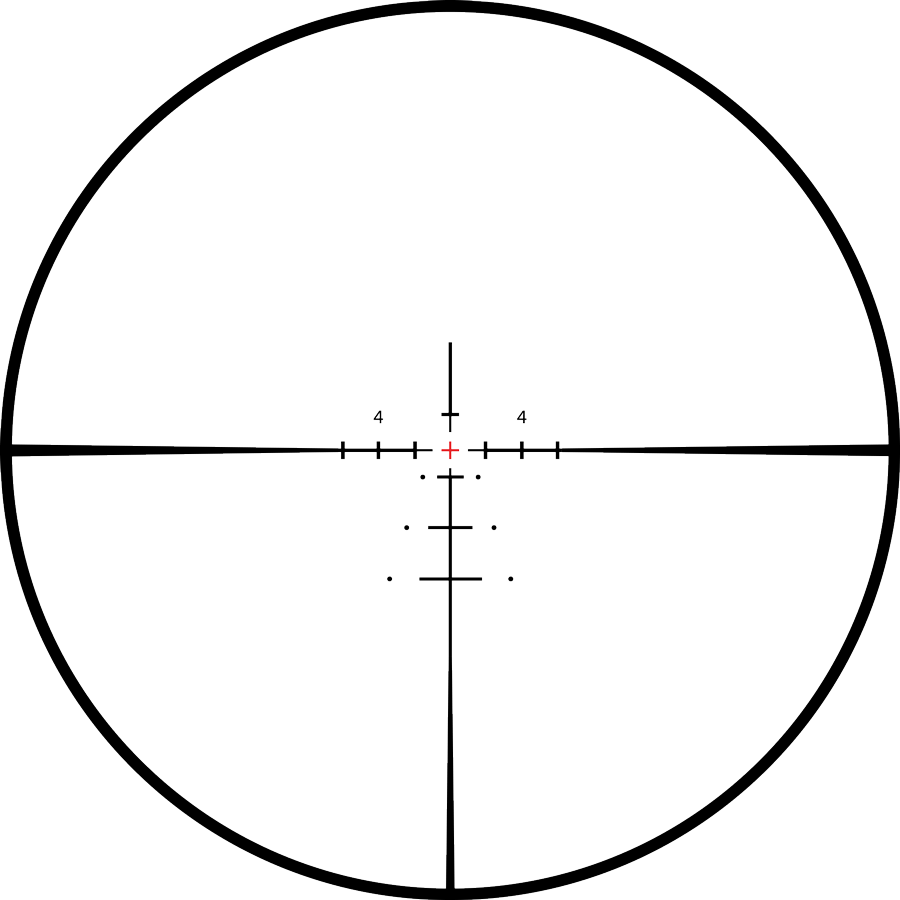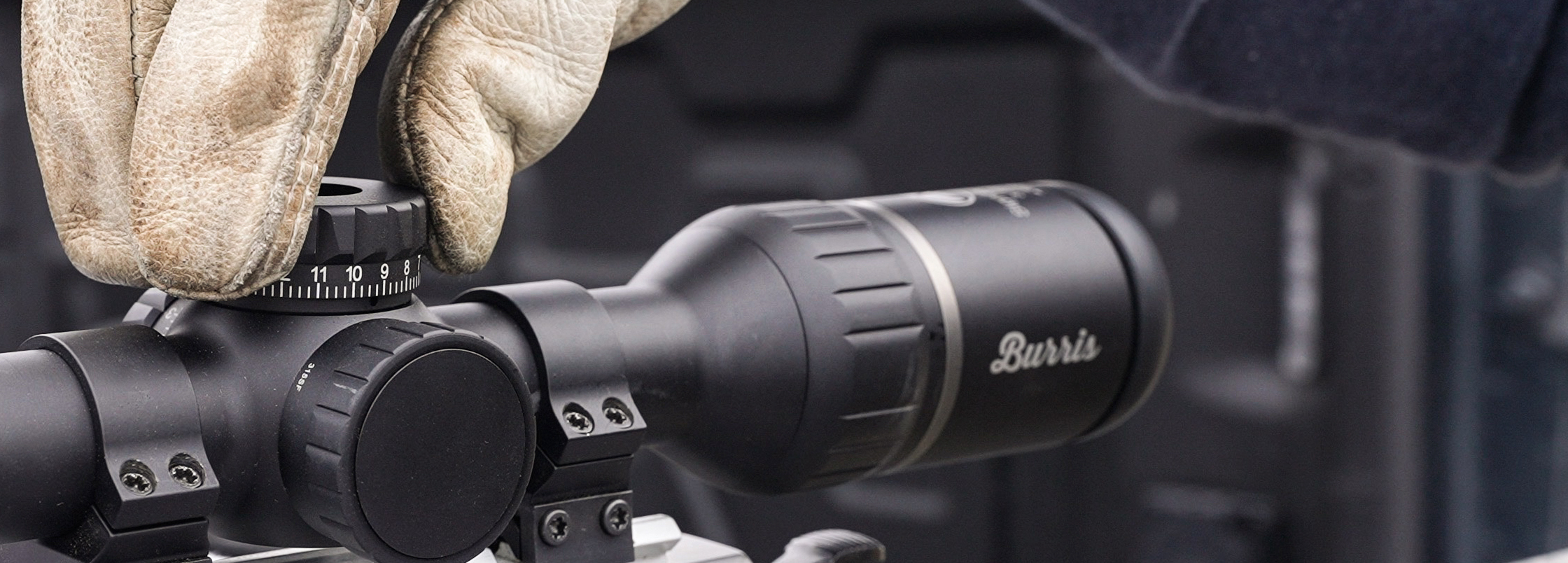Let’s be clear, what we really mean is picking the perfect reticle for your needs. There is no single option that is going to work for every application. Sometimes you will need a specific reticle to get the job done. Sometimes it’s just that one reticle is more efficient or easier to use for a given application. Don’t set yourself on one. Instead, be willing to invest in optics for different situations. And no matter what anyone says, there is no universally ‘best’ reticle.
Though there are dozens of reticle options available, they all fall within just a few categories. This is ignoring some historic examples and a few that are on the fringes. Often these are considered special purpose reticles and are a little beyond the scope of this article. We don’t want to go down that road. Instead, let’s limit it to the 5 most common categories you are likely to run into.
Crosshair
This is the most commonly thought of reticle made famous by Bugs Bunny cartoons and Westerns. This was the first reticle type, made by crossing wires inside a tube though they are sometimes now etched into the glass of the scope. It really doesn’t get any simpler than this standard cross shape making it a good bet for simple applications.

The crosshair is generally not going to be the best reticle for any specific task. Instead, it is just very easy to use. There is nothing to it. Line up where the thin lines cross and pull the trigger. This makes it a great option for young shooters or applications where you don’t need anything extra. I keep one of these on my around-home varmint gun. Shots are generally short at small targets. It’s a good place for this type of reticle.
Duplex
If we step a small step up from the crosshair, we get the duplex reticle. These can be known as simply plex, ballistic plex, heavy plex, and many other variations. The premise is the same though there are some slight differences that can be helpful to some shooters. In short, this is a crosshair where the majority of the lines forming the cross are thickened only to thin out near the point where they actually cross.

The primary advantage of these reticles is the ability to quickly find the crosshair even when vision is limited. This makes them a popular choice for shooters with poor eyesight or those that take their shots in situations where visibility is imperfect. This could be low-light situations or places that have very busy backgrounds like woodlands. The thicker lines add speed and sometimes that speed matters. Especially to hunters.
BDC
If we take a small step up in complexity, we get to the BDC or Bullet Drop Compensating reticle. This is simply a standard crosshair reticle that has a few dots or hash marks denoting bullet drop. Some will be designed for specific calibers but the majority are marked out in Minutes of Angle. The idea of this is to have a basis for determining hold over without doing much in the way of math. It’s an educated Kentucky Windage but for elevation.
The most common rifles to see these on are either brush guns like a .30-30 or small calibers like .22. Sometimes shotgun scopes meant for slugs will use BDC reticles. It’s an easy way to get you on target when you are at shorter ranges but with calibers that have some notable bullet drop at those ranges. These are not a good option for true long-range shooting but are exceptionally good for moderate ranges, especially for hunters.

Mil/MOA
If long-range is your game, you need the most advanced reticle option. The Mil-Dot is probably the most common but MOA based ranging scopes are getting up there. Occasionally you will see these as MRAD instead which switches the dots out for hash symbols. Some of these reticles get quite complex but unless you know what they do and how to read the extra lines, all you are doing is getting a muddled image.
These scopes are designed to be able to determine range when the height of the target is known. A simple formula can be used to get you the correct number which can be dialed in for the appropriate bullet drop negating the need for a rangefinder. This is the world of the sniper and long-range shooter. These are what are commonly used in competitions and on battlefields. Learning to use one correctly is a process but a very rewarding one.
Shaped
The final reticle is the shaped reticle. While this was once something you could classify as a special purpose reticle, they are becoming quite common. The reason for this is speed. Usually found only on lower power optics, these reticles are fast. They get you on target quickly to make your shot. For this reason, they are often found on deer guns and home defense weapons. Many shotgun scopes use shaped reticles and they are becoming quite common on night vision optics.

The shape can be a simple circle, circle with a dot, chevron, and many others. They are not meant to add range but will add a little precision along with speed. Many 3-gun shooters adopted these scopes before red dot sights became popular. They are useful in their own situation but should be avoided on any gun intended to shoot moderate or long-range unless you really know what you want the gun to do.
Conclusion
There are other reticles but none that are important to most shooters. Some of these reticles come in illuminated or partially illuminated options. These are not useful enough to warrant the expense for most shooters but if you are active in low-light, they can be worth it. What is more important is getting the correct reticle for what you need. None are inferior, some just have very specialized purposes. Don’t be afraid to spend the money to get what you want. Or to own several for different situations. Doing so will only make you more effective with your weapon.
Learn more about reticle options from Burris here.
This blog post was guest written by Eric Patton. Eric has been an avid shooter in many disciplines over the years.
